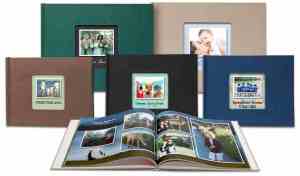Photobook the preferred choice
Photobooks has been the preferred choice in storing images physically in recent years. Due to their professional appearance, versatile nature, it has easily taken over conventional photo album, rendering the latter obsolete. Images on photobooks are usually printed on quality paper, while the pages are professionally bound together and covers laminated. The end product is a slick-looking book of images. Photobooks are usually created by one from scratch. The design, colors, shades, backgrounds are all determined by the creator alone, granting one unlimited control over the look and feel of the photobooks.
The quality of photobooks is vastly determined by their paper, binding, cover lamination and printing. As there are many companies out there that make photobooks, it is important to know what kind of quality one should expect before creating one.
Cover Lamination – Photobooks generally come with covers that are laminated with film to ensure the books are not easily smeared and enabling them to last a lifetime. Quality photobooks should be well laminated and bubble-free so that the lamination does not come off over time.
Paper – Often, photobooks are made with high quality papers. Unlike normal books that are printed with lightweight 70 gsm (grams-per-square meter) papers that tend to turn yellow after a prolonged period of time, papers used on photobooks are usually 140 gsm or higher, acid and lignin-free, which prevents them from turning yellow or easily torn apart.
Bind – A strong bind is the key element in making photobooks last for a lifetime. High end photobooks are bound with industrial-strength PUR (Polyurethane Reactive) adhesive that is waterproof and is very unlikely to erode through wear and tear or even through drastic weather changes. Some come with spine backing so that they can withstand the test of time.
Printing – Apart from the digital imaging industry booming with high resolution technology, printing technology has not fallen behind. High resolution industrial printers are used to print photobooks these days. With a capability of high DPI (Dot Per Inch), images printed onto photobooks are usually crystal clear and flawless.
It is wise to compare the strength and weaknesses of various photobook companies in the industry before actually starting a photobook project. As photobooks are considered very personal and unique to each creator, it makes great keepsakes for anyone who possesses it. Forums and review sites are great places to start. Experienced users tend to share their thoughts and suggestions and would most likely be more credible.
